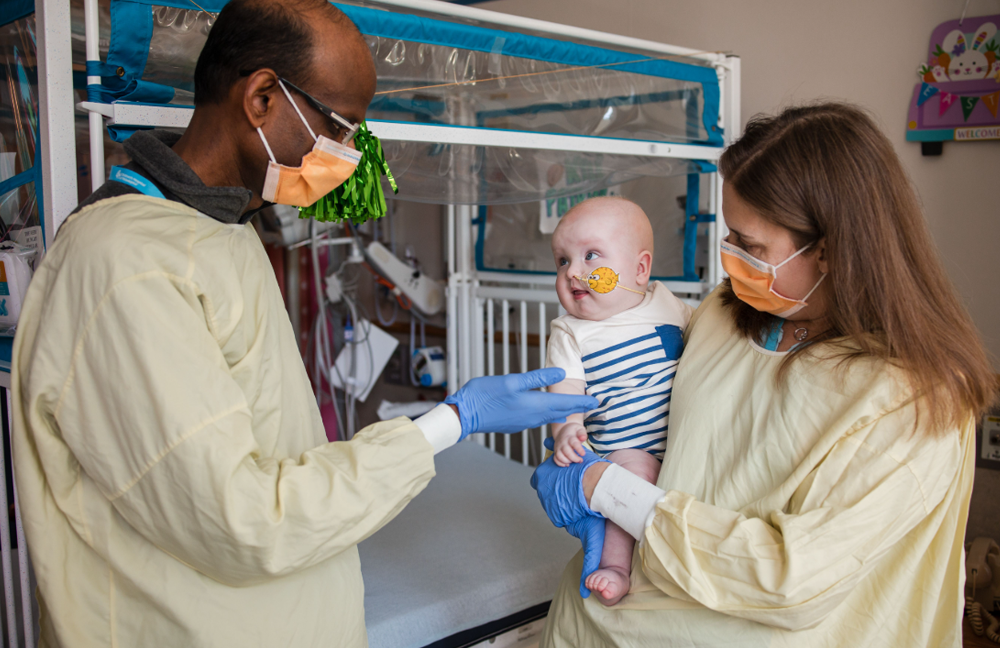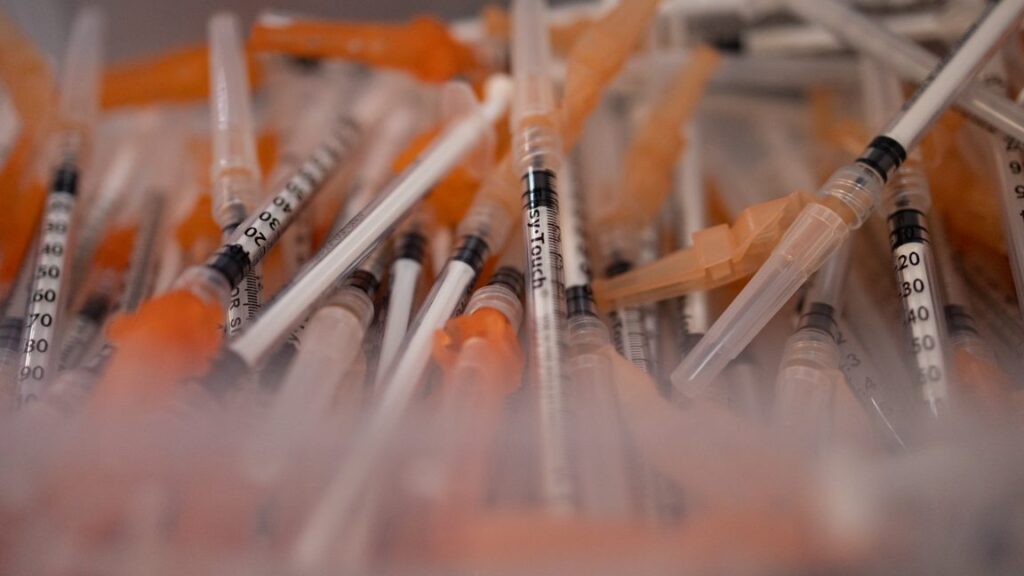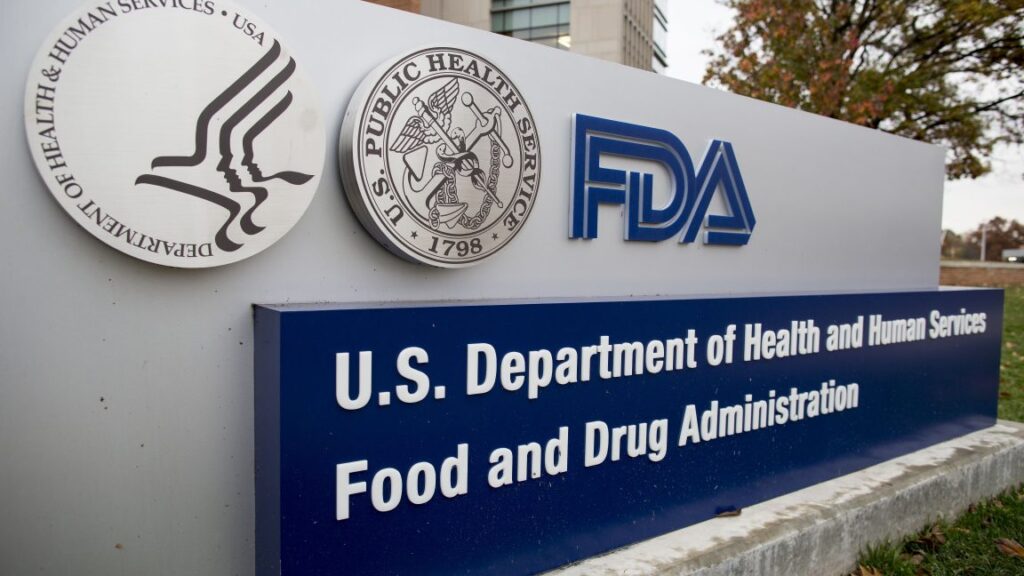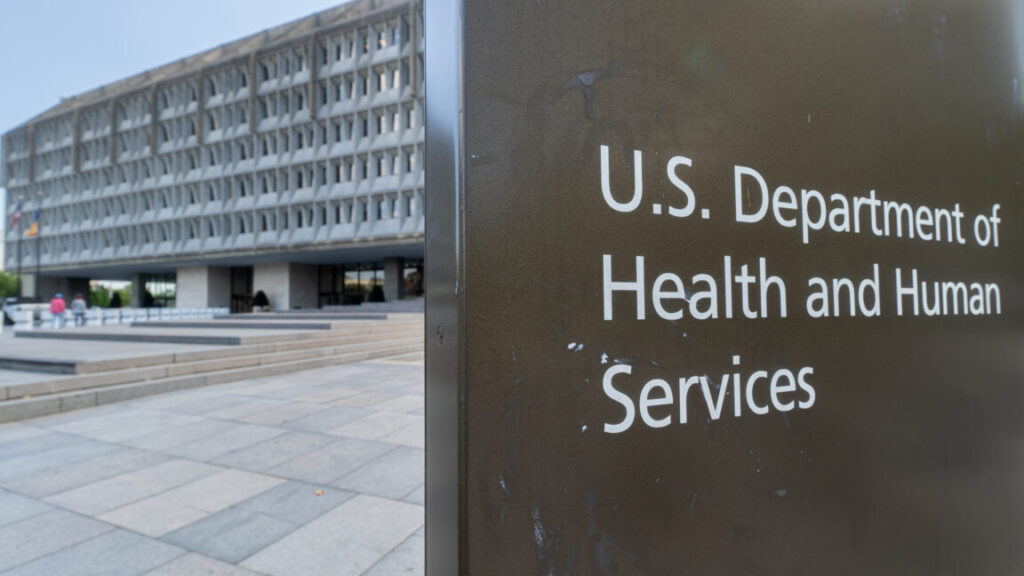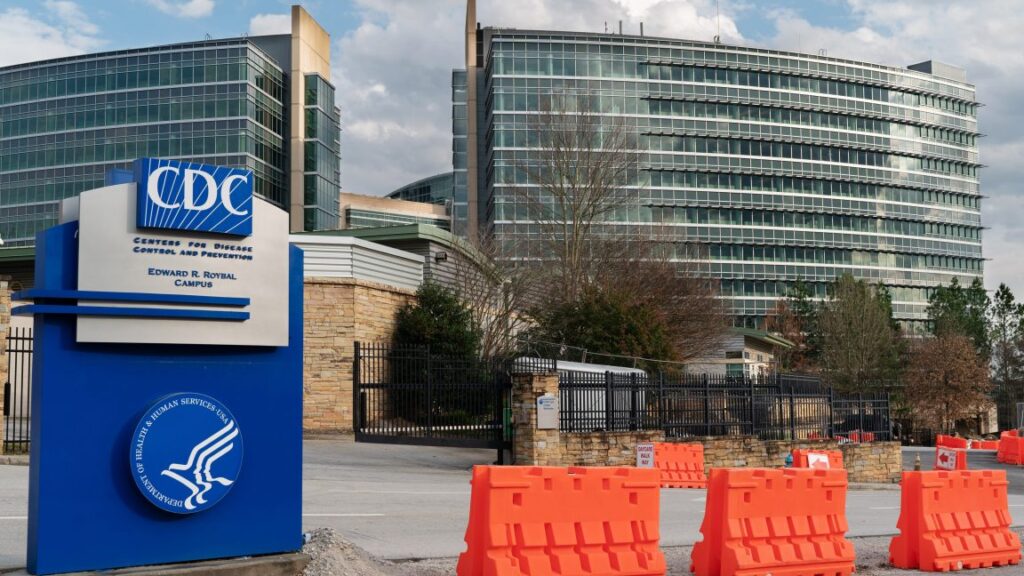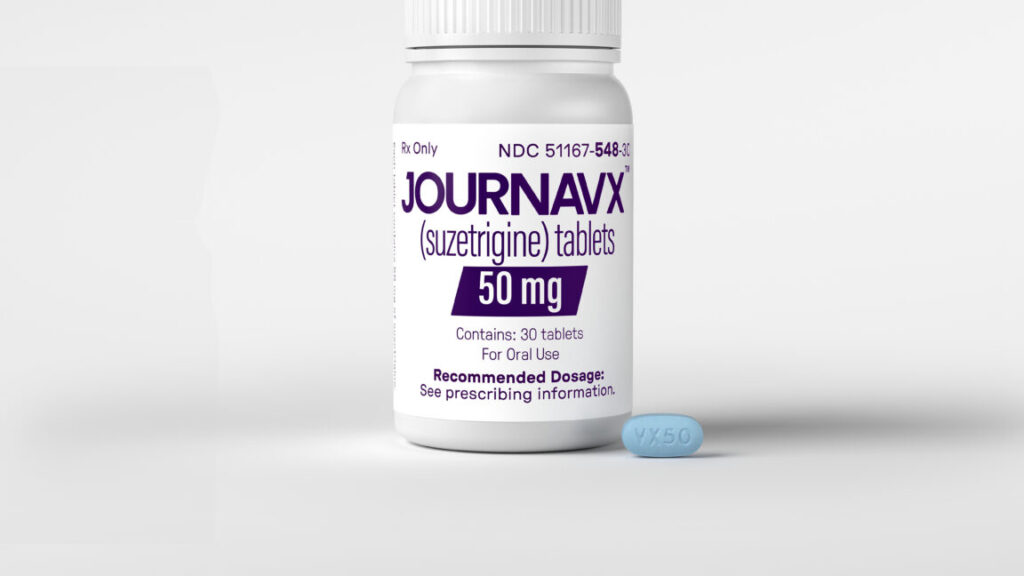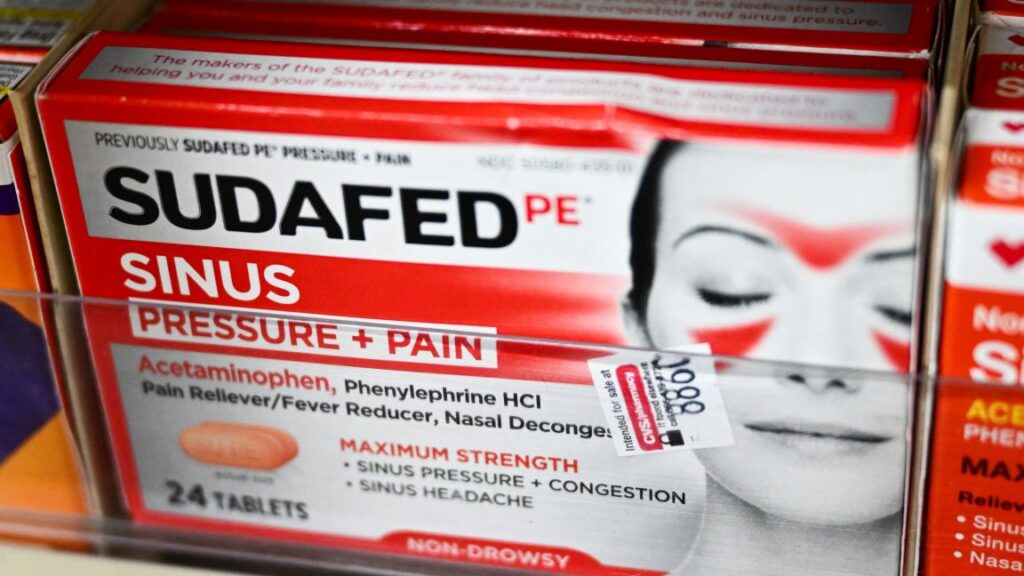Under RFK Jr., COVID shots will only be available to people 65+, high-risk groups
FDA will require big, pricy trials for approvals for healthy kids and adults
U.S. Secretary of Health and Human Services Robert F. Kennedy Jr. testifies before the Senate Committee on Health, Education, Labor, and Pensions on Capitol Hill on May 20, 2025 in Washington, DC. Credit: Getty | Tasos Katopodis
Under the control of anti-vaccine advocate Robert F. Kennedy Jr., the Food and Drug Administration is unilaterally terminating universal access to seasonal COVID-19 vaccines; instead, only people who are age 65 years and older and people with underlying conditions that put them at risk of severe COVID-19 will have access to seasonal boosters moving forward.
The move was laid out in a commentary article published today in the New England Journal of Medicine, written by Trump administration FDA Commissioner Martin Makary and the agency’s new top vaccine regulator, Vinay Prasad.
The article lays out a new framework for approving seasonal COVID-19 vaccines, as well as a rationale for the change—which was made without input from independent advisory committees for the Food and Drug Administration and the Centers for Disease Control and Prevention.
Normally, the FDA’s VRBPAC (Vaccines and Related Biological Products Advisory Committee) and the CDC’s ACIP (Advisory Committee on Immunization Practices) would publicly review, evaluate, and discuss vaccine approvals and recommendations. Typically, the FDA’s scope focuses on licensure decisions, made with strong influence from VRBPAC, while the CDC’s ACIP is principally responsible for influencing the CDC’s more nuanced recommendations on usage, such as for specific age or risk groups. These recommendations shape clinical practice and, importantly, health insurance coverage.
Makary and Prasad appear to have foregone those norms, even though VRBPAC is set to meet this Thursday to discuss COVID-19 vaccines for the upcoming season.
Restrictions
In the commentary, Markary and Prasad puzzlingly argue that the previous universal access to COVID-19 vaccines was patronizing to Americans. They describe the country’s approach to COVID boosters as a “one-size-fits-all” and write that “the US policy has sometimes been justified by arguing that the American people are not sophisticated enough to understand age- and risk-based recommendations. We reject this view.”
Previously, the seasonally updated vaccines were available to anyone age 6 months and up. Further, people age 65 and older and those at high risk were able to get two or more shots, based on their risk. So, while Makary and Prasad ostensibly reject the view of Americans as being too unsophisticated to understand risk-based usage, the pair are installing restrictions to force their own idea of risk-based usage.
Even more puzzlingly, in an April meeting of ACIP, the expert advisors expressed clear support for shifting from universal recommendations for COVID-19 boosters to recommendations based on risk. Specifically, advisors were supportive of urging boosters for people age 65 and older and people who are at risk of severe COVID-19—the same restrictions that Makary and Prasad are forcing. The two regulators do not mention this in their NEJM commentary. ACIP would also likely recommend a primary series of seasonally matched COVID-19 vaccines for very young children who have not been previously exposed to the virus or vaccinated.
ACIP will meet again in June, but without a permissive license from the FDA, ACIP’s recommendations for risk-based usage of this season’s COVID-19 shots are virtually irrelevant. And they cannot recommend usage in groups that the FDA licensure does not cover. It’s unclear if a primary series for young children will be available and, if so, how that will be handled moving forward.
New vaccine framework
Under Makary and Prasad’s new framework, seasonally updated COVID-19 vaccines can continue to be approved annually using only immunology studies—but the approvals will only be for people age 65 and over and people who are at high risk. These immunology studies look at antibody responses to boosters, which offer a shorthand for efficacy in updated vaccines that have already been through rigorous safety and efficacy trials. This is how seasonal flu shots are approved each year and how COVID boosters have been approved for all people age 6 months and up—until now.
Moving forward, if a vaccine maker wants to have their COVID-19 vaccine also approved for use in healthy children and healthy adults under age 65, they will have to conduct large, randomized, placebo-controlled studies. These may need to include tens of thousands of participants, especially with high levels of immunity in the population now. These trials can easily cost hundreds of millions of dollars, and they can take many months to complete. The requirement for such trials will make it difficult, if not impossible, for drug makers to conduct them each year and within a timeframe that will allow for seasonal shots to complete the trial, get regulatory approval, and be produced at scale in time for the start of the respiratory virus season.
Makary and Prasad did not provide any data analysis or evidence-based reasoning for why additional trials would be needed to continue seasonal approvals. In fact, the commentary had a total of only eight references, including an opinion piece Makary published in Newsweek and a New York Times article.
“We simply don’t know whether a healthy 52-year-old woman with a normal BMI who has had COVID-19 three times and has received six previous doses of a COVID-19 vaccine will benefit from the seventh dose,” they argue in their commentary.
Their new framework does not make any mention of what will happen if a more dangerous SARS-CoV-2 variant emerges. It also made no mention of vaccine usage in people who are in close contact with high-risk groups, such as ICU nurses or family members of immunocompromised people.
Context
Another lingering question from the framework is how easy it will be for people deemed at high risk to get access to seasonal shots. Makary and Prasad lay out a long list of conditions that would put people at risk of severe COVID-19 and therefore make them eligible for a seasonal booster. The list includes: obesity; asthma; lung diseases; HIV; diabetes; pregnancy; gestational diabetes; heart conditions; use of corticosteroids; dementia; physical inactivity; mental health conditions, including depression; and smoking, current or former. The FDA leaders estimate that between 100 million and 200 million Americans will fit into the category of being at high risk. It’s unclear what such a large group of Americans will need to do to establish eligibility every year.
In all, the FDA’s move to restrict and hinder access to seasonal COVID-19 vaccines is in line with Kennedy’s influential anti-vaccine advocacy work. In 2021, prior to taking the role of the country’s top health official, Kennedy and the anti-vaccine organization he founded, Children’s Health Defense, petitioned the FDA to revoke authorizations for COVID-19 vaccines and refrain from issuing any approvals.
Ironically, Makary and Prasad blame the country’s COVID-19 policies for helping to erode Americans’ trust in vaccines broadly.
“There may even be a ripple effect: public trust in vaccination in general has declined, resulting in a reluctance to vaccinate that is affecting even vital immunization programs such as that for measles–mumps–rubella (MMR) vaccination, which has been clearly established as safe and highly effective,” the two write, including the most full-throated endorsement of the MMR vaccine the Trump administration has issued yet. Kennedy continues to spread misinformation about the vaccine, including the false and debunked idea that it causes autism.
“Against this context, the Food and Drug Administration seeks to provide guidance and foster evidence generation,” Makary and Prasad write.
Beth is Ars Technica’s Senior Health Reporter. Beth has a Ph.D. in microbiology from the University of North Carolina at Chapel Hill and attended the Science Communication program at the University of California, Santa Cruz. She specializes in covering infectious diseases, public health, and microbes.
Under RFK Jr., COVID shots will only be available to people 65+, high-risk groups Read More »


